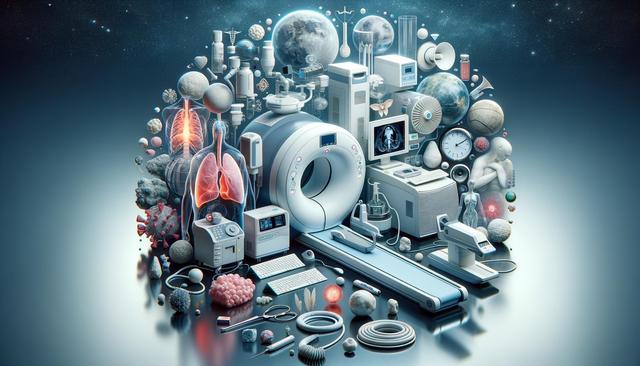What is Cancer? An Overview of a Complex Disease
Cancer is a group of diseases characterized by the uncontrolled growth and spread of abnormal cells. These cells can form tumors, invade nearby tissues, and spread to other parts of the body through the blood and lymph systems. While there are more than 100 different types of cancer, they all begin with mutations in the DNA that affect normal cell function. Understanding the mechanisms of cancer development is the first step in identifying effective detection methods and improving outcomes through early diagnosis. The most common types include breast cancer, lung cancer, prostate cancer, skin cancer, and colorectal cancer. Each type behaves differently and may require unique diagnostic and treatment approaches.
Early detection remains critical in improving survival rates for many types of cancer. Advances in medical research have led to the development of high-bid detection tools that can identify cancer at earlier stages, even before symptoms appear. This enhances the chances of successful treatment and can significantly reduce the severity of the disease.
Common Types of Cancer and Their Symptoms
Certain cancers are more prevalent and well-known due to their frequency and public impact. Recognizing the symptoms associated with each type can aid in prompting earlier medical consultation and testing. Here are some of the most frequently diagnosed cancers:
- Breast Cancer: Often detected through a lump in the breast, changes in breast shape, or nipple discharge.
- Lung Cancer: Symptoms may include persistent coughing, chest pain, and shortness of breath.
- Prostate Cancer: May present as difficulty urinating, blood in urine, or lower back pain.
- Colorectal Cancer: Signs can include changes in bowel habits, blood in stool, and abdominal discomfort.
- Skin Cancer: Unusual moles, changes in skin pigmentation, and lesions that do not heal are common indicators.
It is important to note that symptoms alone do not confirm cancer, but they serve as critical cues for further testing. Regular consultations and being attuned to bodily changes are essential for early diagnosis.
How Cancer is Diagnosed: Screening and Detection Tools
Cancer detection relies on a combination of physical examinations, imaging techniques, laboratory tests, and biopsies. Screening is particularly useful for identifying cancer in individuals who do not yet show symptoms. The effectiveness of detection varies depending on the type of cancer and the method used.
- Mammography: Used for early detection of breast cancer.
- Low-dose CT scans: Recommended for lung cancer screening in high-risk individuals.
- Pap tests and HPV screening: Help detect cervical cancer.
- Colonoscopy: A widely used method for detecting colorectal cancer.
- PSA blood test: Commonly used for prostate cancer detection.
In addition to these traditional methods, high-bid detection tools such as advanced imaging technologies and genetic screening are gaining prominence. These tools can detect molecular or cellular changes before tumors are physically noticeable, offering earlier and more accurate diagnoses.
The Role of Genetics and Lifestyle in Cancer Risk
Genetic predisposition plays a significant role in the development of certain types of cancer. Individuals with a family history of cancers such as breast, ovarian, or colorectal cancer may be at a higher risk. Genetic testing can help identify inherited mutations like BRCA1 and BRCA2, which are linked to increased cancer susceptibility.
Lifestyle choices also contribute significantly to cancer risk. Factors such as diet, physical activity, smoking, alcohol consumption, and exposure to harmful substances can influence one’s likelihood of developing cancer. Preventive measures include:
- Maintaining a balanced diet rich in fruits and vegetables
- Engaging in regular physical activity
- Avoiding tobacco products
- Limiting alcohol intake
- Protecting skin from excessive sun exposure
Understanding these risk factors and modifying daily habits can be a proactive strategy in cancer prevention and overall health improvement.
Importance of Regular Checkups and Awareness
Routine health checkups are essential for early detection, particularly for individuals in higher-risk groups. Many types of cancer can be detected through regular screenings before symptoms develop. For example, annual mammograms for women over 40 and colonoscopies starting at age 45 can help detect issues early when treatment is most effective.
Awareness campaigns and educational resources play a critical role in encouraging people to seek medical advice and participate in screening programs. By being informed about the early signs of cancer and the available detection tools, individuals are more likely to take timely action. In addition, healthcare providers often recommend personalized screening schedules based on personal and family medical history, age, and overall health conditions.
Ultimately, combining awareness with access to high-quality healthcare can lead to earlier diagnoses, more treatment options, and better outcomes. Encouraging regular screenings and promoting healthy lifestyle choices are key components of a comprehensive approach to cancer prevention and management.
Conclusion: Staying Informed and Proactive in Cancer Detection
Understanding the various types of cancer and their detection methods empowers individuals to take control of their health. Early detection through regular screenings, awareness of symptoms, and the use of advanced diagnostic tools can significantly influence the outcome of a cancer diagnosis. While not all cancers can be prevented, many can be managed more effectively when caught early. Staying informed, maintaining a healthy lifestyle, and consulting healthcare professionals about appropriate screening options are essential steps toward reducing cancer risk and improving overall well-being.


